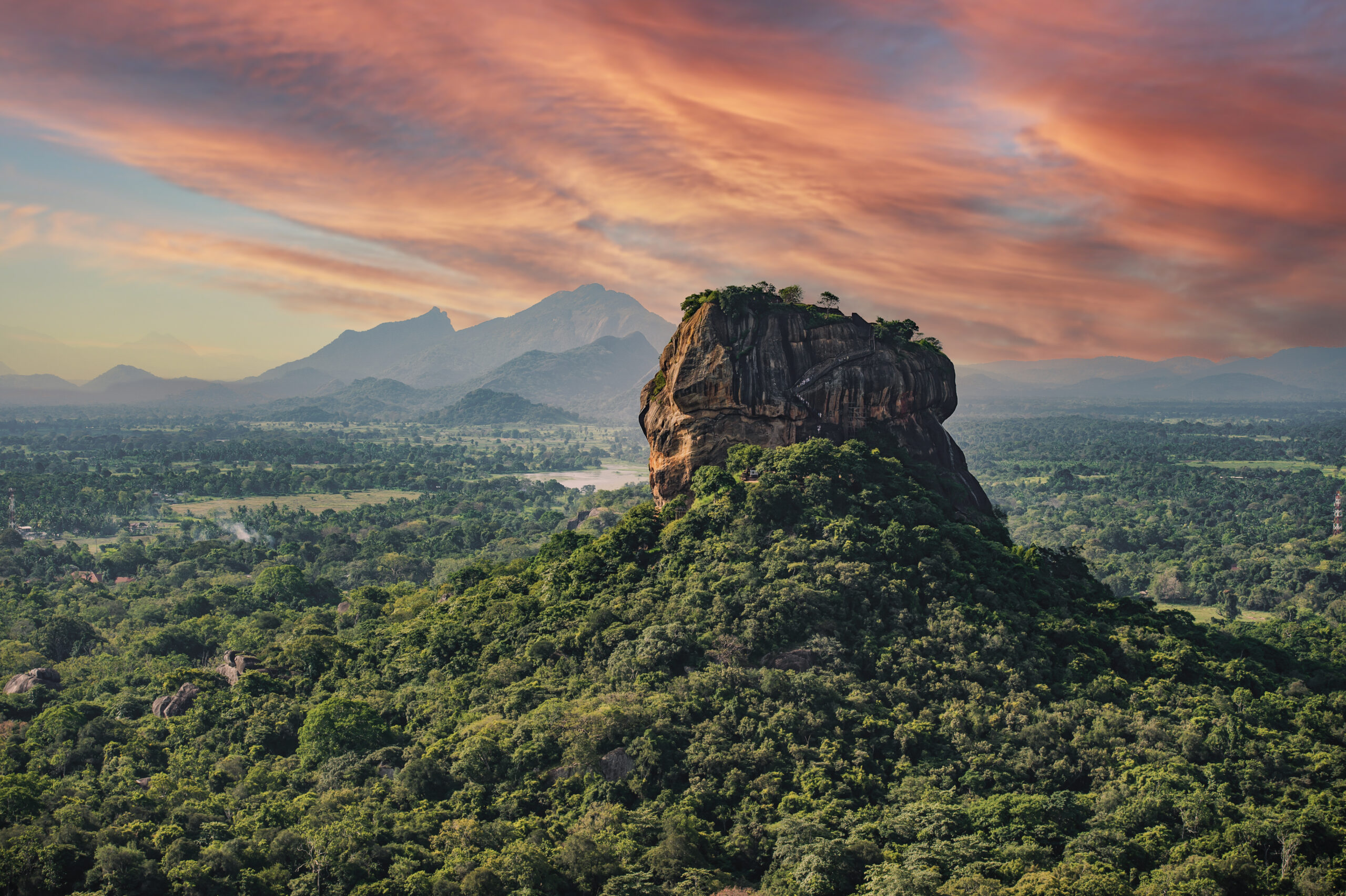Certain places on our planet captivate us. For good reasons—or sometimes controversial ones—they draw us in through their history, geographical location, significance, religious or spiritual symbolism, or that unmistakable atmosphere that makes them truly unique, if not extraordinary destinations. This is our journey to explore some of these remarkable sites.
Today, we’re heading to Sri Lanka to discover the exceptional site of Sigiriya.
A Palace-Fortress Lost to Time
Here stands one of Sri Lanka’s most remarkable and visited locations. In the country’s central region, this major archaeological site—recognized as a UNESCO World Heritage Site since 1982—is instantly recognizable by its massive rock rising above the jungle, topped by an ancient fortress built centuries ago.
Sigiriya, also known as “Lion Rock” (a reference to its monumental lion-shaped entrance gate, of which only the paws remain today), is an impregnable citadel perched atop a gigantic granite monolith nearly 200 meters (656 feet) high. There, among remnants of the past, you’ll discover incredibly well-preserved frescoes, some dating back to the 7th century—shortly after King Kassapa decided to establish his new capital here and construct his palace-fortress complete with elaborate gardens. This royal purpose, however, was short-lived. After his death, Sigiriya served as a Buddhist monastery until the 14th century before falling into obscurity and finally being rehabilitated by authorities in the mid-20th century. This restoration served both the Sri Lankan people—given the site’s symbolic importance—and the countless tourists who have since come to explore it.
An undeniably unique site, though the climb to the summit remains, admittedly, somewhat challenging, accessed via a long, narrow staircase clinging to the rock face. However, once you reach the top, a magnificent 360-degree panorama rewards every visitor and makes the effort worthwhile. Simply breathtaking…
Info: www.srilanka.travel

